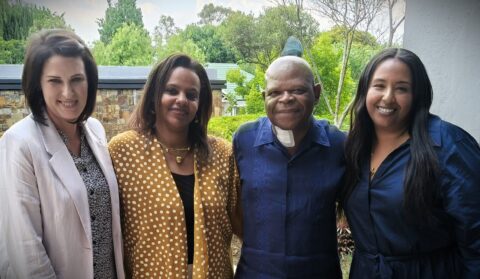SA Mining
Can Mining Be Made Renewable?
The mining industry is one of the heaviest users of Eskom’s electricity. Clearly, then, the impact of load shedding has been felt by this industry in a major way, so it is no surprise to learn that many are considering a shift to renewable energy.
According to Andrew van Zyl, director, partner, and principal consultant at SRK Consulting, mines are considering, and in many cases already, using energy from renewable sources. This includes solar, wind, and green hydrogen, supplemented with pumped storage.
“The low-hanging fruit for decarbonising mining in South Africa is clearly to replace its coal-generated electricity with renewable-generated electricity. Companies are doing this in several ways: by developing their own solar or wind generating capacity, partnering with energy providers, or broadening their corporate mandates to acquire businesses specialised in renewable energy,” says Van Zyl.
In addition to solar and wind farms, he says mines are also looking at using their underground and surface infrastructure for pumped hydroelectric energy storage.
“By using deep vertical shafts, or even steep topography on the surface, the potential energy of water can be harnessed by hydroelectric turbines during peak hours. This water is pumped back to height during hours of low energy demand.”
He says these options allow mines to reduce their scope 2 carbon emissions simply and relatively quickly, by replacing high-carbon electricity from Eskom.
“At the same time, they aim to achieve cost benefits and better security of supply. Importantly, this could relieve some load shedding for other customers,” says Van Zyl.
Renewable transformation challenges and solutions
He says a more challenging technological path is being pioneered to replace diesel engines in large mining haul trucks. “The launch earlier this year of the first ‘hydrogen truck’ on a large SA platinum mine suggests a promising way forward to reduce carbon emissions related to diesel engines by as much as 80%. To enhance its renewable basis, this solution must use renewable energy to produce ‘green hydrogen’.”
He further explains that developing and applying this kind of technology is harder to do than simply switching the source of electricity.
“Successfully replacing diesel power with hydrogen or battery power will require a significant reconfiguration of the traditional supply chain. Even once the development challenges have been overcome, and the capital viability proved, there will still be the need to ramp up manufacturing. This needs to reach a rate that meets demand from mines.”
He also suggests that most renewable energy initiatives in the short term will feed into the mines’ existing electricity supply network, and will thus be feeding a range of onsite functions, such as hoisting, cooling, minerals processing, conveyors, and office facilities.
Janice Foster, market managing director – energy at engineering and infrastructure advisory firm Zutari, believes it is imperative for the mining industry to reduce its reliance on carbon-intensive energy sources. “This is a problem likely to be with us for the near future. It is both the energy security challenge, as well as the requirement to reduce the carbon footprint of our energy supply.”
She adds that Eskom’s Just Energy Transition (JET), established in 2020 to progress the evolution of the transition to a cleaner and greener energy future, is probably the most important consideration from a local perspective.
“The bulk of our power supply is still coal-based. As we transition away from fossil fuels, we need to ensure there are opportunities for participation of all stakeholders, especially the thousands employed in the coal mining industry,” says Foster.
Potential impact of a hydrogen economy
Hydrogen is an extremely exciting fuel, with high energy density and potential for enhancing transport applications, according to Van Zyl.
“The hydrogen fuel cell has been applied to motor vehicles, and just recently, a mining truck. However, the inclusion of batteries into solutions using hydrogen does present the problem of weight, especially in very heavy mining haulage applications.
“Solutions to the weight problem include either further progress in the generation of green hydrogen and the use of fuel cells in mining trucks, or in reducing the weight of the batteries required. This could be achieved either through development of more efficient batteries or facilitating the charging of the batteries during haulage,” he says.
External communication principal at Anglo American Platinum, Nomonde Ndwalaza, says the hydrogen economy is a big focus area for the company.
“From the perspective of clean energy, as well as new commercial uses for platinum group metals , we have spent significant time and money investing in industry efforts to make it a viable reality,” says Ndwalaza.
“Our recently launched hydrogen truck is a concrete example of this commitment. We plan to replace our entire fleet of trucks at Mogalakwena with green hydrogen, produced from solar energy onsite.”
The Mogalakwena solar project is in addition to Anglo American’s broader renewable energy plan to add 3GW to 5GW of renewable energy to the grid in SA, thereby adding much-needed electricity capacity and reducing carbon emissions.
Ndwalaza notes that the hydrogen truck is also an anchor investment in the proposed hydrogen valley the company has been working on with government and other private sector partners.
“The aim is to establish a hydrogen valley stretching from Mogalakwena, along the key trade corridors, to Johannesburg and Durban. This will provide alternative energy sources to a variety of projects in different industries, and reduce emissions,” she says.
Government’s energy action plan: a positive outlook
Commenting on President Cyril Ramaphosa’s new energy action plan, announced in July to address the country’s energy crisis, Foster says the plan sends a strong and positive message across the board, from the mining sector to transportation and other heavy power consumption industries.
“What is great about the president’s new action plan is that he has opened the energy challenge to a shared solution with opportunities for everyone to have an impact, no matter how big or small.”
Foster says: “A highlight of the plan is doubling the new generation capacity for wind and solar power for Bid Window 6 of the Renewable Independent Power Producer Procurement Programme (REIPPPP) from 2 600MW to 5 200MW, of which Zutari has supported client projects in all REIPPPP Bid Windows to date, including the latest.”
At Anglo American Platinum, Ndwalaza suggests they have welcomed the president’s action plan to stabilise SA’s electricity utility and to adopt wide-ranging reforms to bring on the additional capacity required to ensure energy security.
“With these reforms, SA has an opportunity to address its energy crisis and manage its just energy transition in a manner that positions the country for future growth and resilience,” says Ndwalaza.





